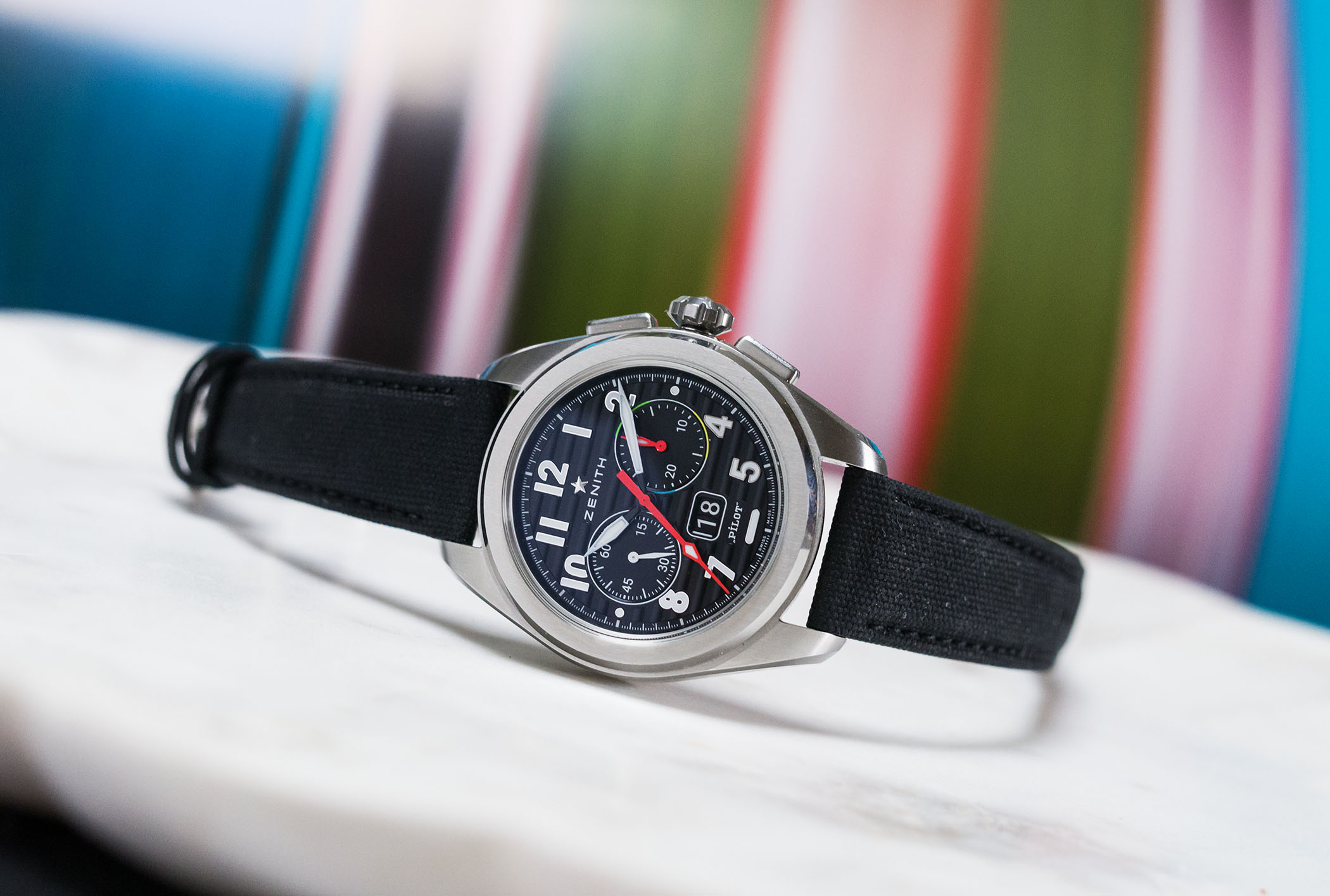Zenith switched gears last year with the revitalization of their Pilot range of watches, a collection that’s struggled to find its footing in the modern era. The move came on the heels of years focusing on their sport and heritage collections, which brought a breath of fresh air to the historic brand’s catalog. The Pilot watch collection is of course a big part of Zenith’s history as well, so having a modern interpretation available is an important core part of their identity. In 2023, Zenith would attempt to crack this code, and released 4 watches as a base to a new generation of the Pilot watch. The watches themselves were somewhat lost in the shuffle of Watches & Wonders, as often happens, but experiencing them in person left a decidedly different impression than what was given by the press photos.
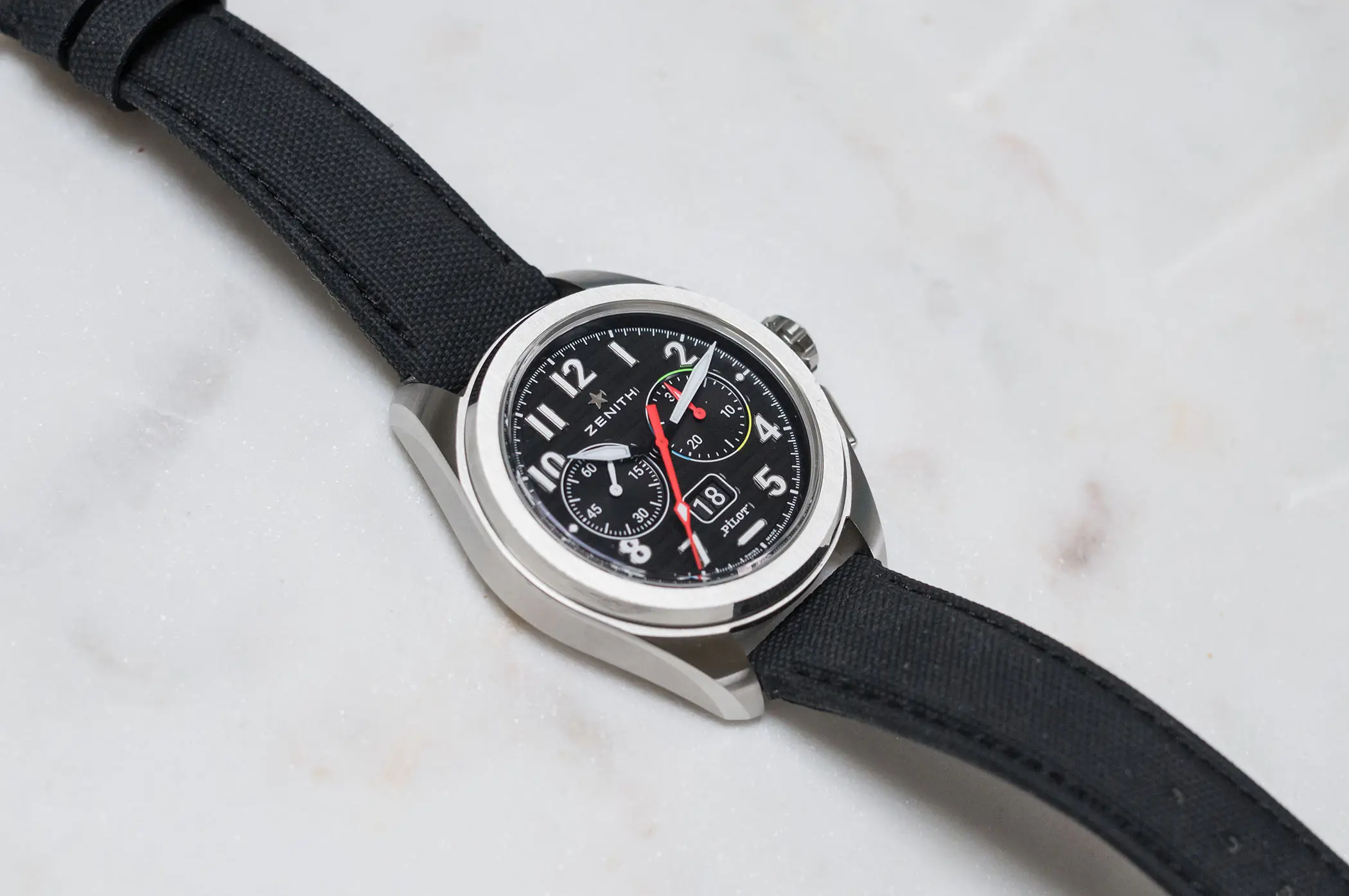
This is a phenomenon that can work both ways. Some watches have the capacity to create tantalizing Instagram images, or look amazing in the hand, but don’t translate as well on the wrist. Conversely, there exist watches that must be experienced on the wrist or seen in person to fully appreciate. The Zenith Pilot collection released last year doesn’t fall directly into one of those camps, but it’s much closer to the latter than the former.
The new Pilot watch collection consists of a time and date example, and a big date flyback chronograph example, each rendered in either steel or black ceramic. The design of both features bold, graphic hour markers applied to the dial in a manner that creates a huge amount of contrast to the satin black underneath. The steel chronograph adds some color to the mix in a not so subtle nod to the Rainbow Flyback of the late ‘90s, which we reviewed here.
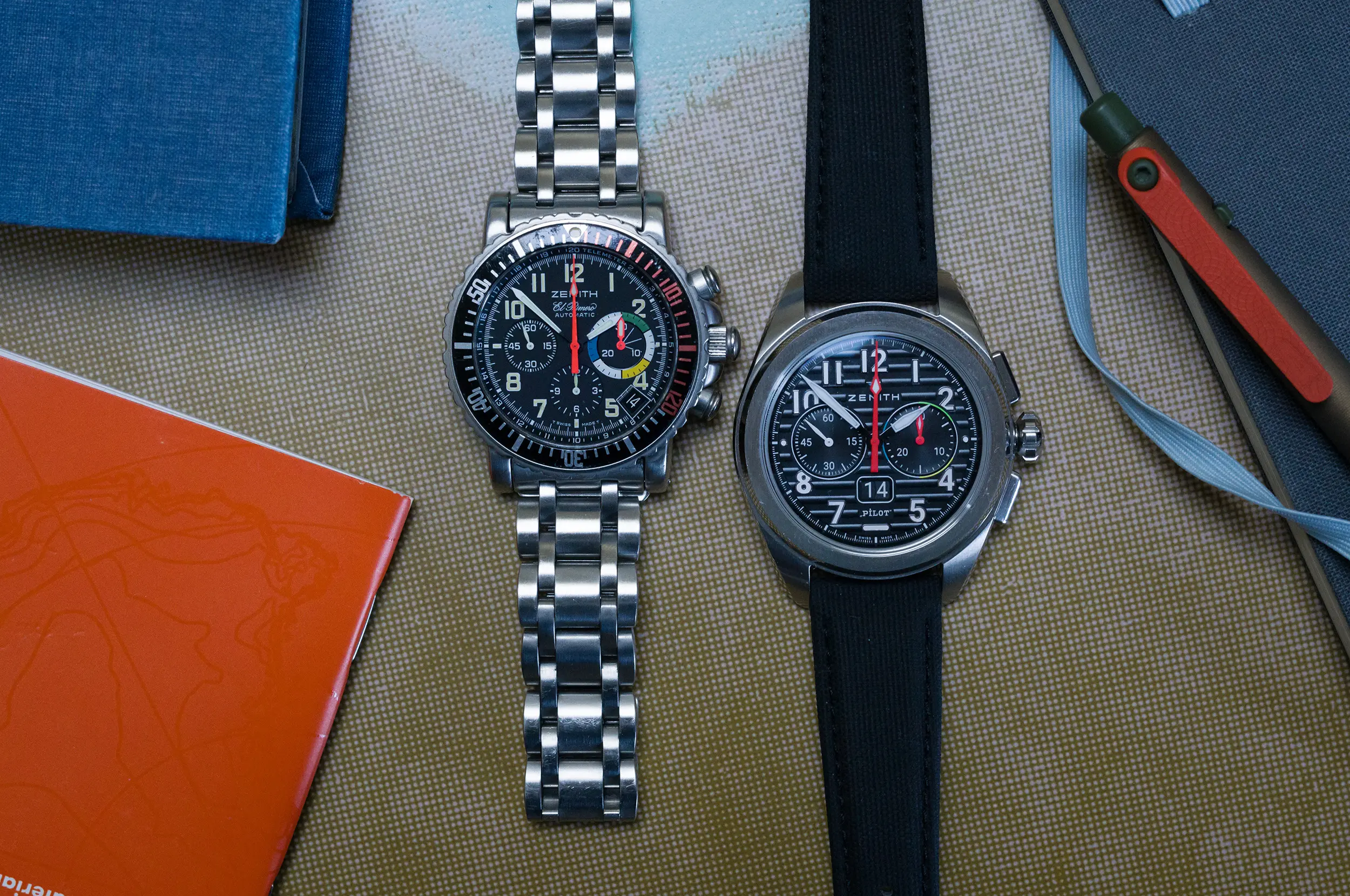
There is an elusive quality to these watches that’s difficult to pick up on images. But it is there, and I believe that largely comes down to how the different elements work together in motion, and how the dial captures light. On its surface, the design is almost overbearing thanks to the scale of the elements at work, be it the hour markers, the sub dials of the complications, the date aperture, and even the crown and bezel. Everything feels… jumbo. But yet, they are all packed into somewhat manageable case dimensions of 40mm for the time and date Automatic, and 42.5mm for the Big Date Flyback. Both of these watches wear quite well thanks to a short lug overhang, but they each carry a lot of visual weight, appearing a bit bigger than they really are.
A key feature of these Pilot watches are their black corrugated dials. The ridges running horizontally are meant to evoke the vibe of a fuselage of the old war plane. The ridges are rather large and well spaced, and on paper they sound like a total distraction, and an arguably unnecessary one at that. However, they present far more subtly in person than you might imagine from just images. They establish a nice balance between retaining contrast with the functional elements of the watch, and providing some visual interest at certain angles. A dial without the corrugation would still work quite well here, given the strength of the other elements, but as presented it lends to the unique personality of these watches.
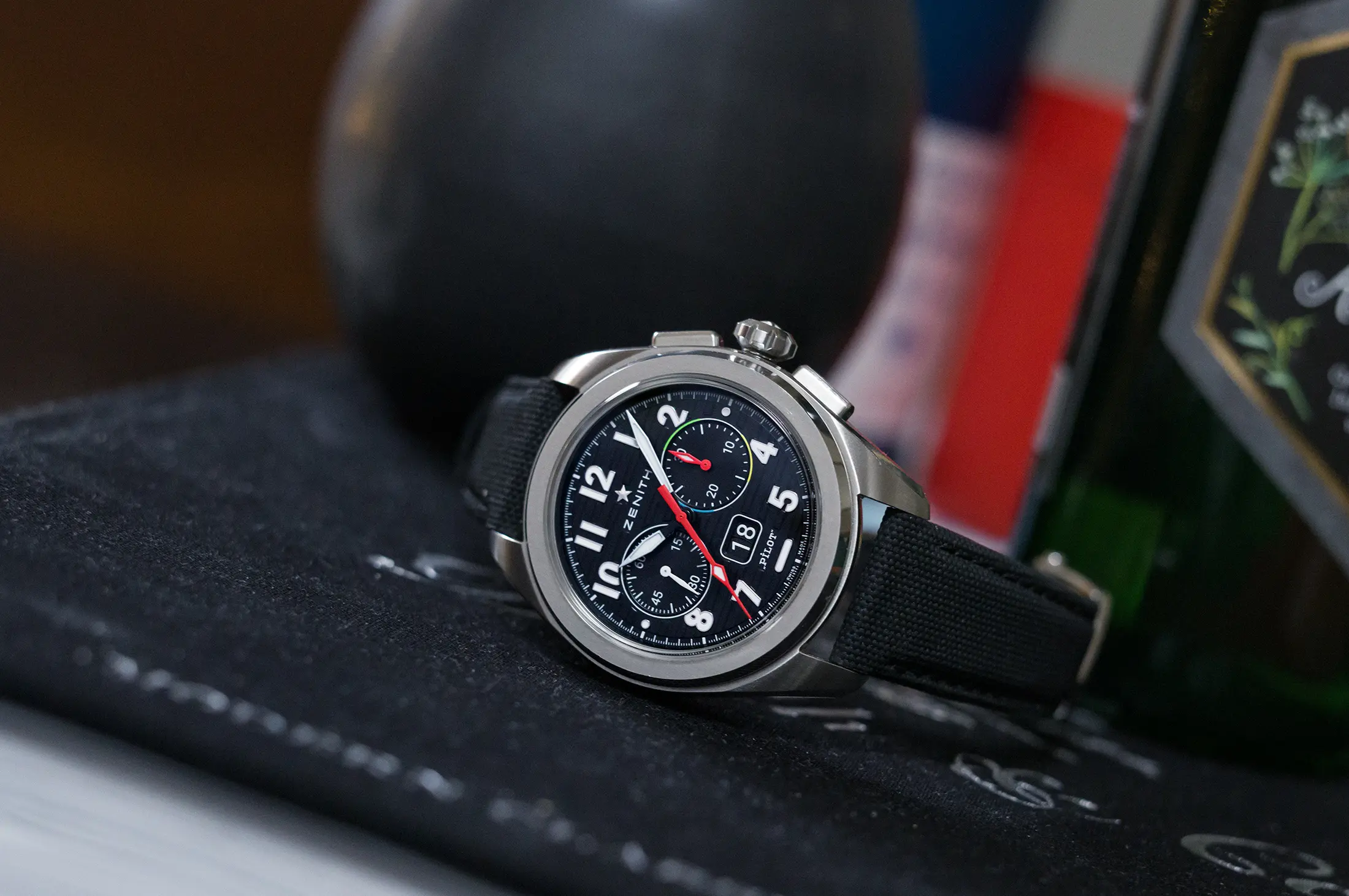
A closer look at the steel Big Date Flyback yields a few more details worthy of note, many of which are crucial to the ‘better in person’ quality of the watch. Not just visual elements, but mechanical ones as well. This dial is a true balancing act, with each of those oversized bits competing for attention. Again though, it all works somehow, and that comes down to the functional components hitting the right scale to work. The hands, for instance, are broadsword in shape, but are presented in a quite narrow manner, and their bases are coated in black to reduce any fussy counterweight details getting in the way. This feature also lends to the excellent legibility of the watch.
The oversized sub-dials at 3 and 9 o’clock house the running seconds indication, and the minute totalizer respectively. The ring framing the totalizer gets the green, yellow, and blue notes, while the timing hands are presented in bright red. The use of color here is just enough to make an impression without feeling overdone. Sure, it’s not as funky as the ‘97 Rainbow Flyback, but its purpose works just as well here.
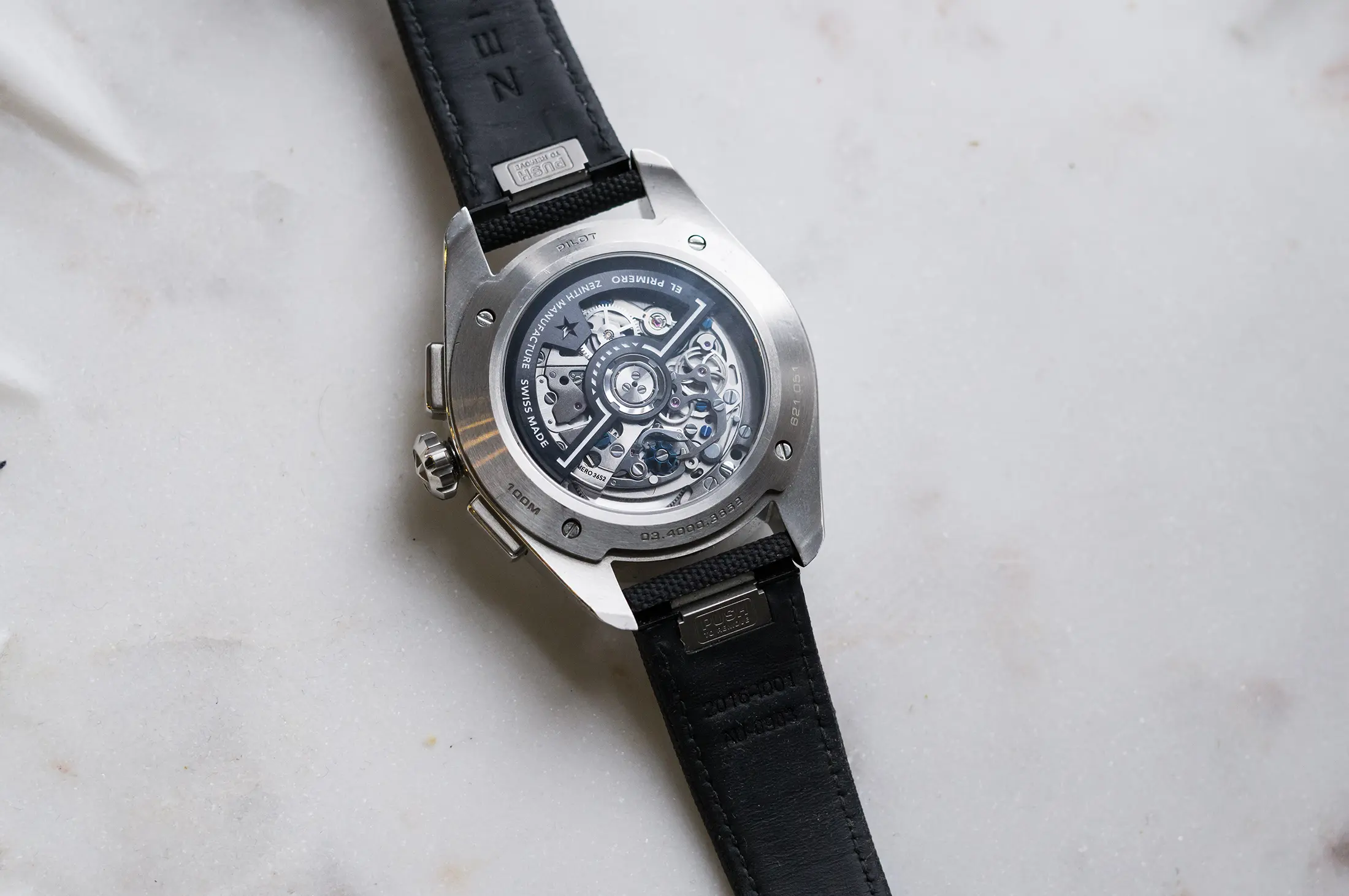
At the bottom of the dial sits the big date aperture, using a nested pair of rotating discs. Zenith has taken this a step further and made this an instantaneous big date, meaning it snaps to the next day in an instant with a very satisfying click snap, like changing gears in a Honda S2000. Even changing the date via the crown feels mechanically visceral. It’s a wonderful little detail that will only ever be enjoyed by the wearer.
Another of these qualities is the chronograph actuation. The feel of starting, stopping, and resetting of the timer feels well tuned, dampened but still mechanical. It’s confident, and it’s on par with watches much higher up the food chain. The movement is the high-frequency El Primero 3652, which has also adopted a flyback function, meaning the timer can be reset without stopping.
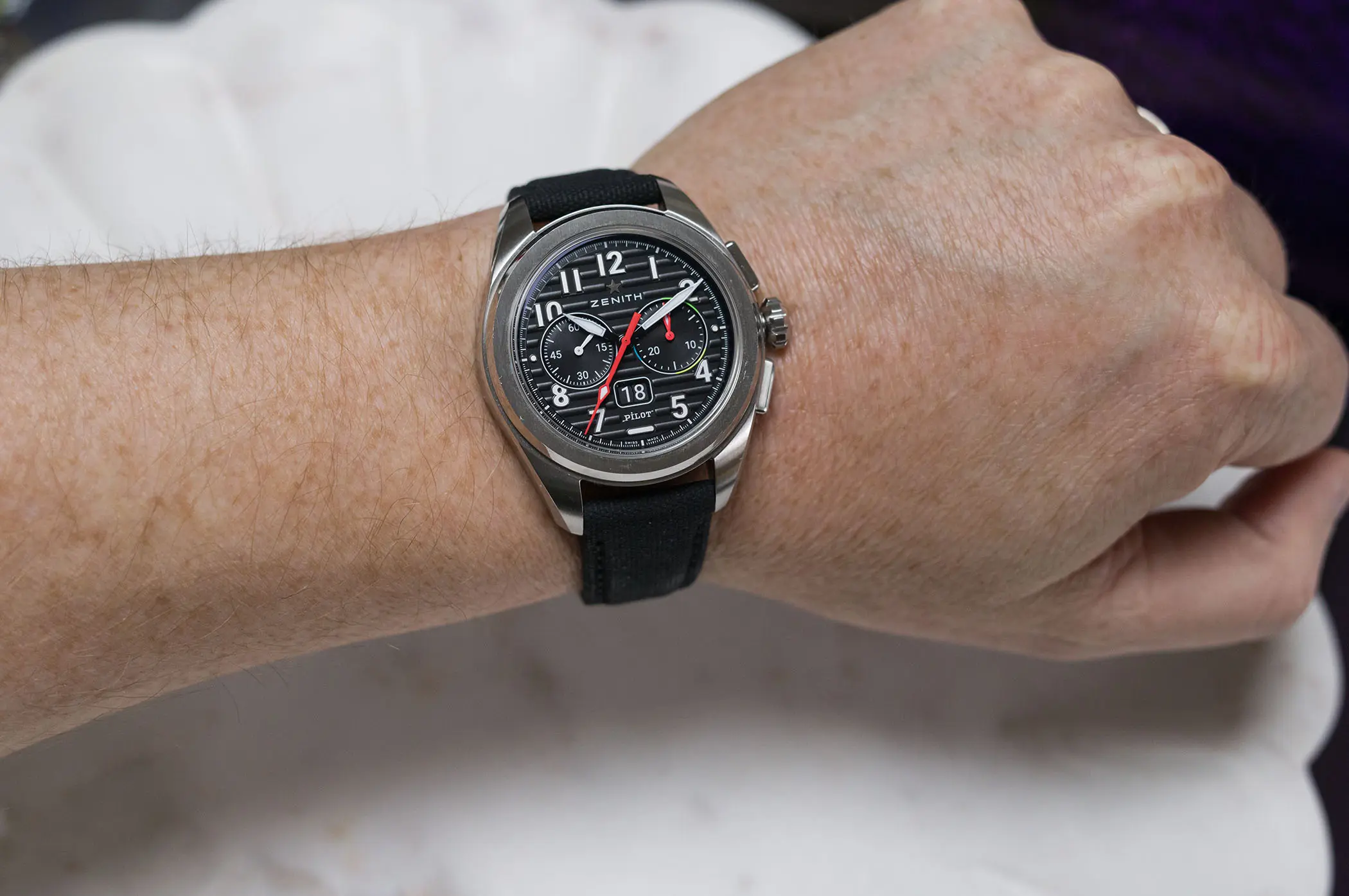
Overall, each of these qualities show a lot of attention and care went into these watches, and that comes through when experiencing the watch in the metal. Which is something you’d certainly hope for in an $11,500 watch. This is still a focused Pilot watch, and boasts impeccable legibility and practical functionality, but it’s a lot more than that, too. The design certainly won’t be for everyone, and the case and bezel could be seen as overpowering, but as a first step back into the Pilot watch space proper, Zenith has shown a far more adept hand than we’ve seen in the recent past. If these watches are any indication, they will serve as a healthy foundation for many more to come. Zenith.

